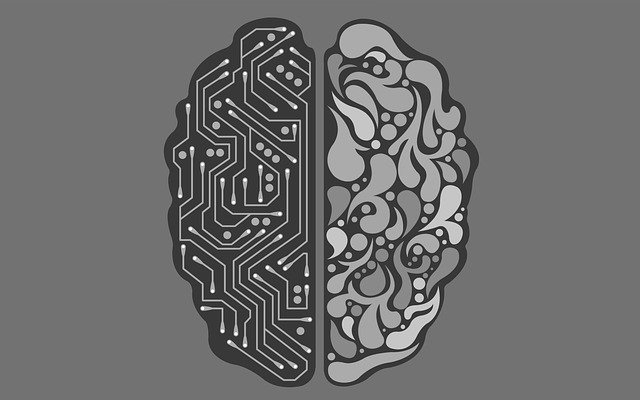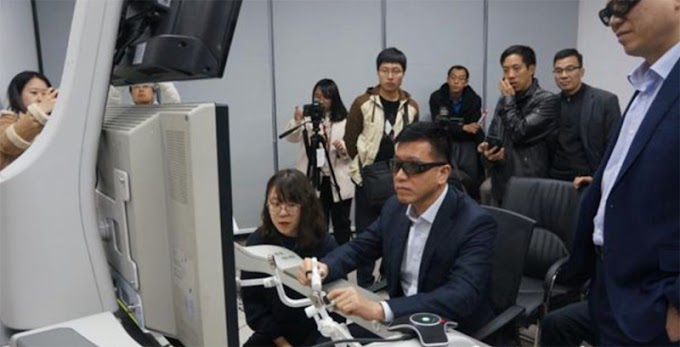Introduction:
-------------------------------------------------------------------------------------------------------------------------------------------------------------------
For site assistance, please visit here.
For contact, please visit here.
The world is growing rapidly; every second, millions of devices
are getting connected to the internet. It is expected that the total number of
connected devices is going to be trillion very soon. But what makes the number
of connected devices so big? You will probably think about the rising no of
users due to the availability of 4G and 5G networks`. Well, partially true, but
the more interesting thing is it is not the cell phone handsets that are alone
responsible for this exponentially growing number of connected devices. Then
what else? Everything!! Yes, you heard it correctly. One of the goals of the
next generations of cellular telephonic like 5G is to connect each and
everything with the internet. TADA! Scientists call it the Internet of Things
(IoT).
What is IoT?
IoT is a term used to describe the connectivity between ‘things.
The word things refer to any things that are used in our daily lives. For
example, a toaster, a ceiling fan, a car, a road crossing light, ... anything.
Then why on earth one need to connect all these things? Well, that a
descriptive matter. Let us, take an example and try to understand this matter.
We have seen the self-driving cars, right? It constantly monitors the roadway
crossing lights, pedestrians, it also connects to the internet and GPS to
identify the safest and sound road for an accident-free journey for the rider
as well as the pedestrians. In this case, the signal light talks to the car,
the other signal light posts, cameras at different locations in a city reads
the condition of the road, and sends information to the car via the Internet. A
similar scenario can be observed in a certain home as well. If a user forgets
to turn off the bedroom table lamp while leaving for the office, the electrical
energy will be wasted throughout the day. If it is possible to connect the
table lamp to the user via the internet, it will not be a problem for the user
to turn off the lamp from a distant location, even when he is out of the
country. The technology that gives the power to do this is called IoT, the
Internet of Things.
 |
| Pic: With 5G everything will be connected with the internet, it is called IoT |
Structure of the
Internet of things and Its usage:
To answer the question ‘how the IoT works?’ we have to learn a
few technical things. Don’t worry it will not be that hard. First of all, for
the sake of simplicity, let us understand what is the Internet? All thought it
is well known but only a few people know its structure. The internet is a
worldwide network of thousands of various sizes of networks. For example, the
network of technology giants youTube, google, apple, cisco, Tata groups,
reliance group, the networks of various government organization, universities
cumulatively create the Internet, where any user has the capability of
accessing some information from another part of the world while sitting in his
own country. The primary need for IoT devices was to remotely operate machines
in the industrial application. It means an operator in Russia should have
complete control over a remote machine in one of their clients in another part
of the world. In doing so, the company which sells the machine can provide very
good customer service worldwide. So, if they are having a wide and secure path
between the operator and the machine through the internet, they can easily
serve the customer from their country. This is only one of the applications of
IoT, the other applications are countless and can be applied in healthcare,
education, transport, industry, film, production, disaster management, etc.
Just you name it, there will be an IoT application. So, a device is primarily
connecting to the local network, which can be a small home wi-fi network or a
LAN in a factory environment, this small network is connected to the internet
providing the facility to the user to remotely operate the machine by using
simple protocols. The detailed structure will be covered in a separate blog, but
currently, let us focus on the impact of the IoT devices on us.
Impact of IoT in
society:
The IoT devices are one of the game-changing
technological advancements in the twenty-first century. Surely IoT has a great
impact on human life, it is going to change human life several ways, a few are
as follows:
1. Industrial
impact:
As explained earlier, the need for IoT devices came from
industries. Nowadays several companies are using IoT security cameras, alarms
to monitor their production sites, IoT devices are used to measure &
control the rate of flow coolant in a production plant. In some of the
technology farms, the whole network is being monitored by using IoT sensors so
that the network can endure a sudden change in data traffic. Or on the other
hand, power distribution companies can implement the IoT to monitor the load
distribution in their service areas. It is expected that the IoT market is
expected to grow from USD 77.3 billion in 2020 to USD 110.6 billion by 2025.
2. 2. Agricultural Impact:
Agriculture is one of the fields that has the greatest
potential to adopt IoT. Many countries have begun to use devices like soil
moisture sensors, light sensors, cameras in an IoT network to monitor crop
production in fields. It not only reduces the human effort to produce good
quality of crops but also optimizes the use of water, fertilizer, &
pesticides. This optimization helps the farmer to reduce the production cost
but also ensures lesser contamination of the pesticides into produced crops due
to the optimized use of the pesticides. It is worth mentioning that though the
introduction of IoT devices it is now possible for a small group of people to
run an organic farm and supply fresh organic fruits and vegetables to the
customers. The agriculture IoT market in Europe is expected to hold the
second-largest share during the forecast period. European farmers are already
using smart agriculture technologies such as yield monitoring, GNSS technology
in guidance and steering, variable rate application, and crop scouting.
3. IoT in Healthcare:
During the spread of COVID-19, the need of IoT technology
has been experienced well. In the exponential growth of the affected people,
there was a lack of available healthcare resources. As a result, thousands of
patients have lost their lives during this period and it is continuing. If the
houses and the hospitals were IoT enabled, then many lives would have been
saved by simply remotely operating several medical equipment. Also, people
suffering from contiguous diseases was able to get remote consultation &
treatment by using IoT devices. Some of the countries have utilized IoT enabled
robots to supply food & medicine to the patience in the hospitals as well
as houses. Artificial intelligence (AI) is one of the constituent parts of the
IoT technology, by using AI, diagnostics, and analysis of the disease has
become so accurate that the diagnostics of disease sometimes becomes 90%
accurate. Moreover, healthcare management becomes fairly easy by the
introduction of IoT enabled devices in the hospital premises.
There is much more application of IoT out there. Now it
can be clearly understood that IoT devices are growing much faster than that we
thought earlier.
Are we ready for
IoT?
As we have seen that IoT has several applications in
every field of society, the question is are we ready to adopt IoT? The answer
depends upon several aspects:
First of all, IoT
devices need to be connected through a very high-speed internet connection like
5G. Because in an IoT network, the data density would be very high, also the
connected devices per square meter area are expected to be increased several
hundred times which will generate a huge stream of data all at once. To carry
the data to the destination (typically a cloud), a connection with a very high data
rate is a must. The most obvious candidate for this job is 5G. Several
countries have an active 5G network, they are likely to be using IoT in its
full-fledged application in the upcoming day, all though, in the testing phase
they have successfully implemented IoT. Unfortunately, in India, we are using
4G connection at most. Indian govt. & Indian telecom companies have already
started working on 5G, details can be found here.
Till then, we, the Indian are not going to see the IoT implementation on a
nationwide scale.
Secondly, and
probably most importantly, in the job sector. It is a well-known fact that in
the job sector India is not doing well. In previous years, the rate of
employment is declining constantly. Moreover, the spread of COVID-19 has
increased the declination. IoT is surely going to reduce the requirement of
human efforts. The reader may think that IoT will take people’s jobs, but trust
me it will not be like that. What if I say, it is going to generate several
jobs? Sounds a little absurd isn’t it? Operating IoT network requires much more
skilled personals than the laborers & workers in the industry. The need for
labor and workers will be reduced in IoT but in comparison to that much more
skilled people are needed to manufacture, serve, and maintain the IoT devices.
Alone IoT manufacturing companies are going to provide the majority of the
jobs. Jobs will include system designing, computer science, IT, networking,
wireless communication. Then comes the marketing & transportation of the
IoT devices which also adds to the number of jobs offered in the development of
IoT. The rest will be categorized into two groups namely, IoT device &
network maintenance and R&D. The jobs that will be provided under the
network maintenance are network engineer, IT engineer, data analyst, data
scientist. While in the R&D section, the jobs will be research-oriented,
which includes improvement of the security of the IoT, developing
cost-effective methods of IoT device production, reducing the power consumption
of the IoT devices, increasing the speed of the communication within the
network.
 |
| Pic: Jobs that IoT is going to create alone |
Conclusion:
Now, we have discussed several aspects regarding IoT, so we will be in a
position to answer the question that are we ready to adopt IoT? Our generation
has witnessed several technological changes, IoT is one of them. We will be
ready to adopt the IoT only we satisfy the requirements discussed above.
Considering those aspects, it can be generalized that we, Indian, are getting
ready for IoT. Our generation has adopted the change, our next generation will
be in a world in which IoT will be implemented. Till then, isn’t it a good idea
to learn the skills for it? Here are some good sources from where we can learn
IoT.
Some good resources for IoT courses:
Some good resources for IoT courses:
For site assistance, please visit here.
For contact, please visit here.




0 Comments
All non-spamy comments will be visible